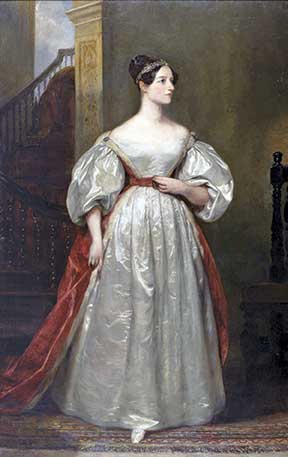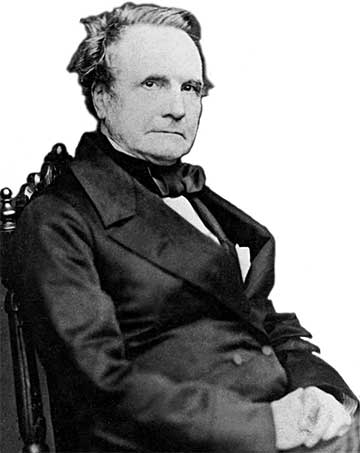Mamata Pandya
Every Wednesday my newspaper carries stories about young techies, especially about women who have made a mark in the field of computer technology. In recent years, there has been a lot of discussion about encouraging girls to engage with STEM, and inspiring stories about women, from the 20th and 21st centuries who have excelled in these fields, are being popularized.

Not many can imagine that one of the pioneers of computing science was born over 200 years ago, and that she was a woman! This was Ada Lovelace, a computing visionary who recognized the immense potential of computers. Augusta Ada Byron was born in London on 10 December 1815. She was the only child of George Gordon or Lord Byron, the brilliant but eccentric English poet and Annabella Milbanke, a highly intelligent and educated woman with a flair for mathematics.
The marriage between the poet Bryon and the “princess of parallelograms”, as he called his wife, was tempestuous and short. A month after Ada’s birth, Annabella Byron moved their daughter out of their London house and away from Lord Byron’s influence. Annabella was afraid that Ada would inherit her father’s ‘poetic’ temperament and erratic traits and kept her daughter away from the “imaginative” arts, bringing her up in a strict regimen of science, logic, and mathematics, as well as music.
Ada’s father, Lord Byron left Britain when Ada was a baby. He died in Greece when Ada was just eight years old. Ada never knew him; she was largely brought up by her maternal grandmother and servants and educated by private tutors. She suffered long spells of bad health right from childhood and through her life.
Ada was fascinated with machines from an early age and devoured the science magazines of that time. But she was equally imbued with her father’s imagination. When she was 12 years old, Ada wanted to fly. But she did not stop at dreaming; she methodically studied birds and feathers and experimented with different materials that could serve as wings and even wrote and illustrated a guide recording her research, called ‘Flyology’. She was reprimanded by her mother who saw this as a fanciful project.
In 1833, Ada, as a debutante to London’s high society, attended a party where she was introduced to Charles Babbage, a renowned mathematician. Babbage spoke to her about his new invention – a tower of numbered wheels that could make reliable calculations with the turn of a handle. He called this the “Difference Engine”. A few days later, Lady Byron took Ada to his home where he demonstrated the device in his drawing room. Ada was very intrigued by the incomplete prototype. She initiated a correspondence with Babbage about its potential and her own mathematical studies. This was the beginning of a close and lifelong friendship. Babbage was then a 40-year-old widower and Ada a young debutante, both with very divergent personalities, but the two corresponded and exchanged ideas for many years. Babbage recognized and encouraged her potential; in 1839 he wrote to her, “I think your taste for mathematics is so decided that it ought not to be checked.”
Babbage spoke highly of Ada’s mathematical talent and of her particular capability to prepare the descriptions connected with his calculating machine which he described as being higher than that of any one he knew. On one occasion he called her “The Enchantress of Numbers”.
At the age of 19, Ada married William King, an aristocrat, and they had three children. In 1838 William King was made Earl of Lovelace and his wife Ada became Lady Ada King, Countess of Lovelace. But she became generally known as Ada Lovelace.

Along with being a wife and mother, Ada continued her independent pursuit of mathematical knowledge. She became friends with one of the finest female mathematicians of her time, Mary Somerville, who discussed advanced modern mathematics with her, set her higher-level mathematics problems and talked in detail about Charles Babbage’s “Difference Engine”. In 1841 she was given tuition in advanced mathematics by Professor Augustus De Morgan of University College London. All the time, she kept Babbage’s Difference Engine in mind.
In 1834 Babbage began a new project that he called the ‘Analytical Engine’. He envisaged this as a large heavy machine with thousands of cogwheels with a punch-card operating system that could perform more functions with greater accuracy. Ada served as the key interpreter of the project. On a trip to Turin to promote his work, Babbage met a mathematician named Luigi Federico Menabrea, who agreed to write a paper on the machine. It was published in a Swiss academic journal in October 1842. Ada translated the paper from French, for publication in England. Babbage asked her to expand the article as she knew the machine so well. Ada thus added her own copious and detailed notes, addressing difficult and abstract questions that the paper threw up. While the original paper was about 8000 words, Ada’s annotated English version came to 20,000 words. Ada’s translation, along with her notes, was published in 1843 with the title Sketch of the Analytical Engine, with Notes from the Translator.
In her paper she clearly described how Babbage’s device would work with references and illustrations from the silk-weaving Jacquard loom which wove patterns using a set of punched cards which issued instructions to the machine. She wrote, “We may say most aptly that the Analytical Engine weaves algebraic patterns just as the Jacquard loom weaves flowers and leaves.”
She explained how Babbage’s machine could perform a similar function using a sequence of punched cards or “machine code”. In her paper, Note G, (as it is known) she set out a detailed plan for the punched cards to weave a long sequence of Bernoulli numbers, and thereby became what may be considered as the first computer programmer.
Ada Lovelace broke new ground in computing, identifying an entirely new concept. She realized that an analytical engine could go beyond numbers. This was the first ever perception of a modern computer – not just a calculator, but a machine that could go beyond the field of mathematics and contribute to other areas of human endeavour, for example composing music.
Ada Lovelace died of cancer at 36 in 1852. It was more than a 100 years before her notes were discovered, The “Analytical Engine” remained a vision, until Lovelace’s notes became one of the critical documents to inspire Alan Turing’s work on the first modern computer in the 1940s. In 1979, the US Department of Defence named a new computer language “Ada” in her honour.
Today as many more young women enter the field of computer science and technology, it is time to remember Ada Lovelace, a pioneer and path-breaker of her time. And to celebrate the power of imagination. In 1841 she wrote: Imagination is two things: The Combining Faculty which seizes points in common, between subjects having no apparent connection and The Discovering Faculty which penetrates into unseen worlds around us, the worlds of Science.
The author worked at the Centre for Environment Education in Ahmedabad for over three decades, where she was engaged in instructional design for educators and children. She is now an independent consultant, editor, writer, translator, storyteller and blogger. She can be reached at mamata.pandya@gmail.com.
